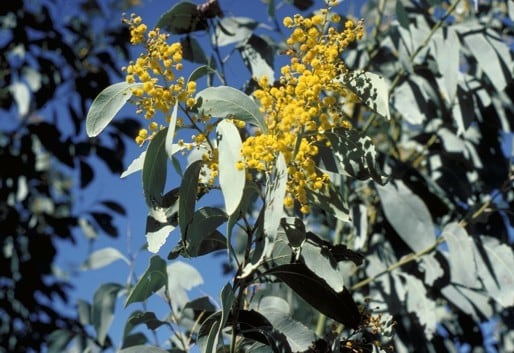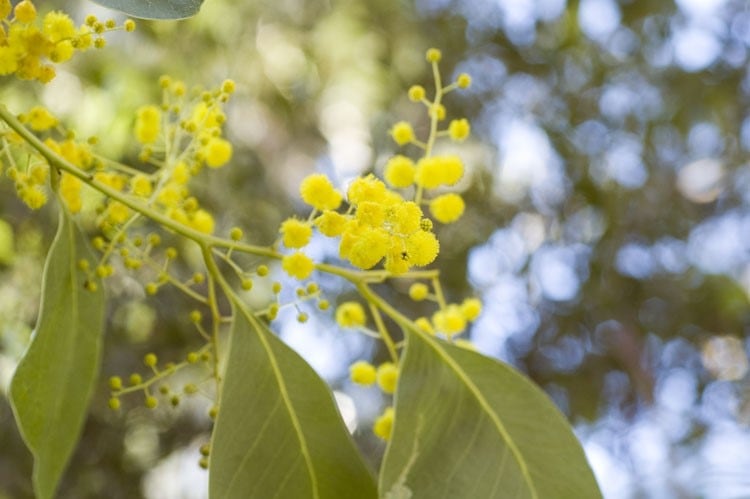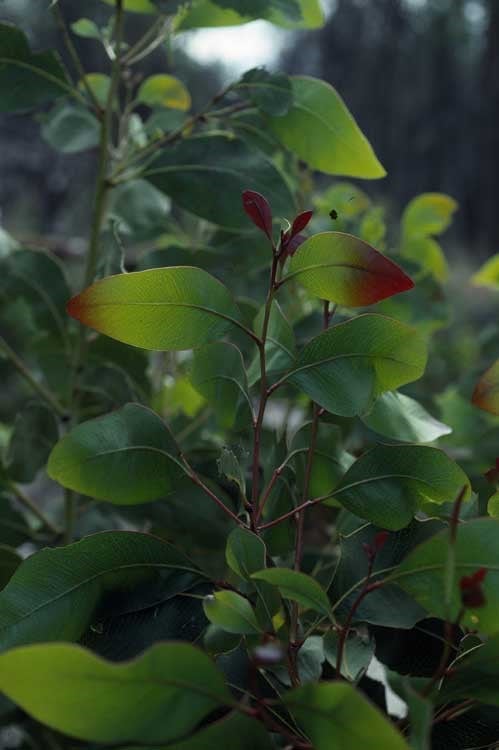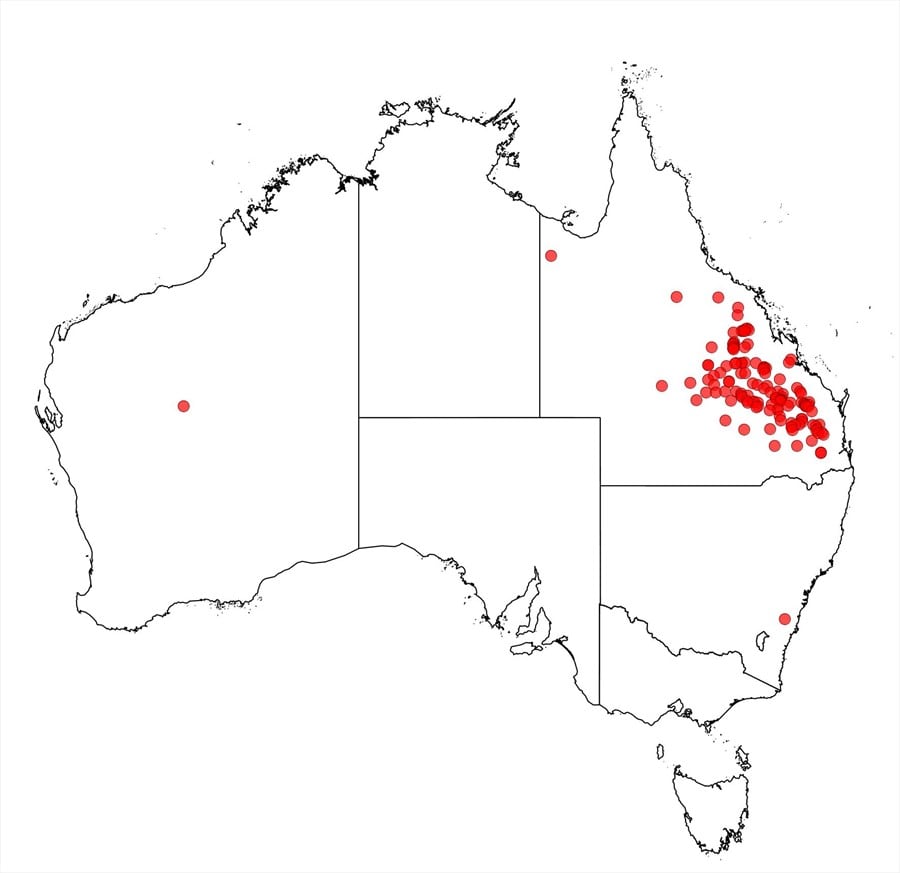Acacia bancroftiorum Maiden
WATTLE
Acacias of Australia
Family
Fabaceae
Distribution
Common from Collinsville S to near Crows Nest and W to near Tambo, and in the White Mtns area, Qld..
Description
Spindly shrub or slender tree to c. 6 m high. Upper branches often pruinose. Branchlets dark reddish, often pruinose, glabrous. Phyllodes obliquely obovate to narrowly elliptic, curved near the much-narrowed base, 9–22 cm long, 25–80 (–160) mm wide, obtuse, usually glaucous, glabrous; midrib prominent and ±excentric; minor nerves forming an open reticulum; gland 0–4 mm above pulvinus, with pore narrow and elongated (often slit-like), and 1–3 additional glands on triangular projections sometimes present; pulvinus 5–12 mm long. Inflorescences racemose, sometimes paniculate; raceme axes 3–8 cm long, sometimes longer, glabrous, sometimes appressed-puberulous; peduncles 4–8 mm long, glabrous, sometimes appressed-puberulous; heads globular, 25–40-flowered, pale lemon yellow or golden. Flowers 5‑merous; sepals c. 5/6-united. Pods to 22 cm long, 9–15 mm wide, thinly coriaceous, slightly pruinose, glabrous. Seeds longitudinal, oblong to elliptic, 6–9 mm long, ±dull, black; funicle encircling seed in a single fold, thick, reddish brown; aril linear-clavate.
Habitat
Usually grows in shallow soil on rocky hillsides in Eucalyptus woodland or open forest. Near Kingaroy it occurs in deep alluvium and its foliage is then usually green, fide L.Pedley, Austrobaileya 1: 265 (1980).
Specimens
Qld: 21 km NNE of Springsure, M.E.Ballingall 2199 (BRI, PERTH, Z); ‘Warang Holding’, White Mtns, 37 km NNW of Torrens Creek, D.Fell & Swain DF1322 (PERTH); 21 km ESE of Rolleston, M.Lazarides & R.Story 8 (AD, PERTH); 60 km W of Collinsville on the Bowen Developmental Rd, T.Stanley 78353 & E.Ross (BRI).
Notes
Acacia bancroftiorum appears to hybridise with A. macradenia (e.g. R.W.Johnson 893, BRI) and A. falciformis (e.g. R.J.Henderson et al. 958, BRI) in the Burnett and Leichhardt Districts respectively. The A. bancroftiorum × A. macradenia hybrids resemble A. holotricha.
A decorative species. Until recently this species had been known as A. bancroftii; however, as the name commemorates both Joseph Bancroft and his son, Thomas Lane Bancroft, the correct termination for the name is ‘-iorum’.
Specimens with hairy raceme axes and peduncles occur in the south-east of the range and are distinguished from A. falciformis by gland position and morphology. Glands also serve to distinguish the species from A. penninervis where (A. falciformis also) the margin is often shallowly indented at the gland which is connected to the midrib by a fine oblique nerve. Resembles A. wardellii.
This species appears not far removed from the ‘A. microbotrya group’.
FOA Reference
Data derived from Flora of Australia Volumes 11A (2001), 11B (2001) and 12 (1998), products of ABRS, ©Commonwealth of Australia
Author
Minor edits by J.Rogers
B.R.Maslin
This identification key and fact sheets are available as a mobile application:
URL: https://apps.lucidcentral.org/wattle/
© Copyright 2018. All rights reserved.














